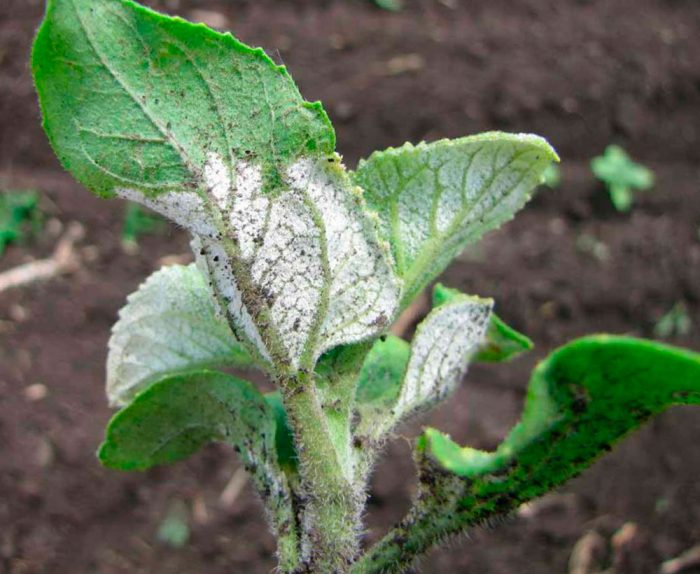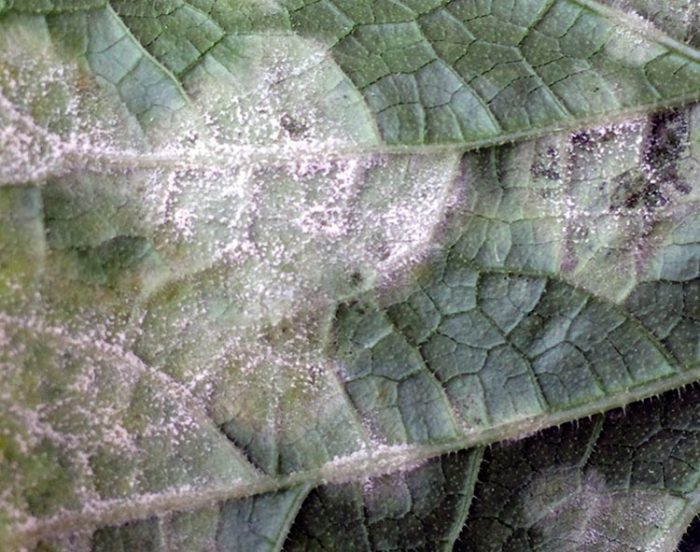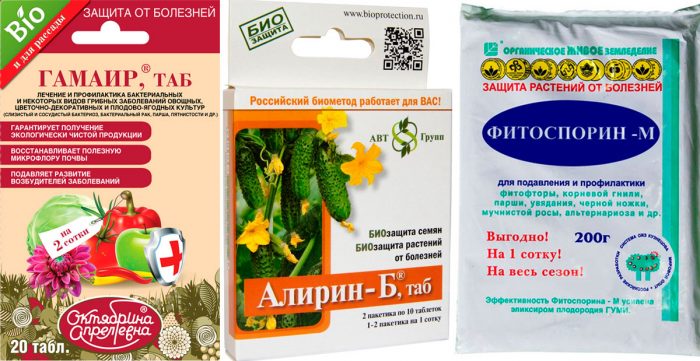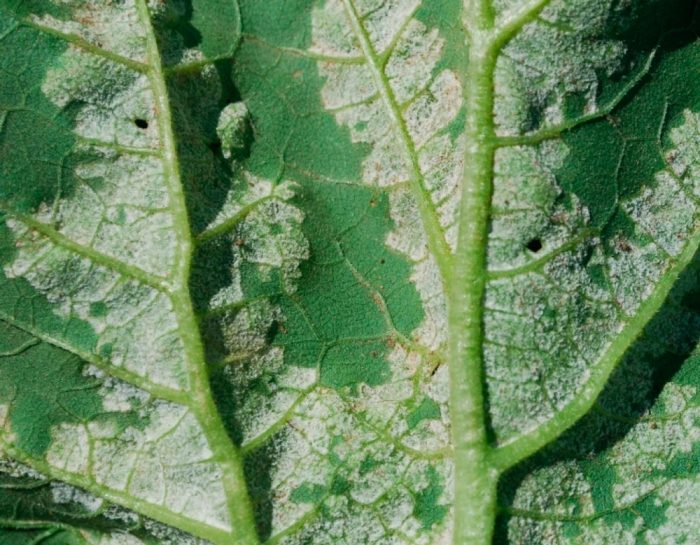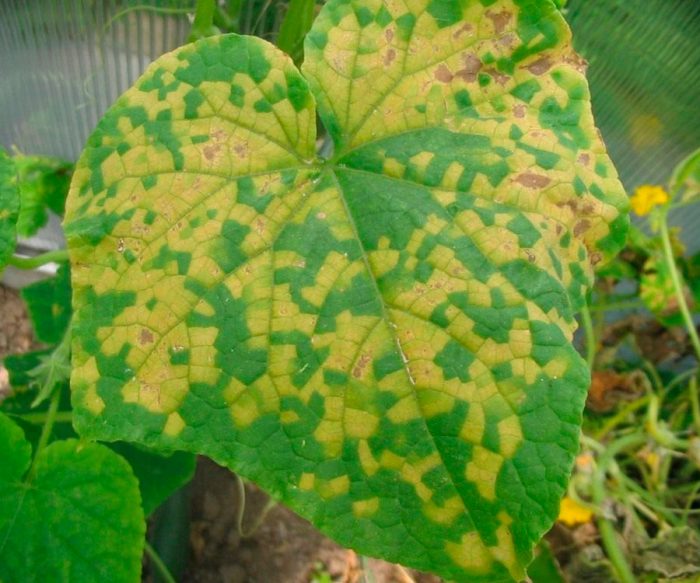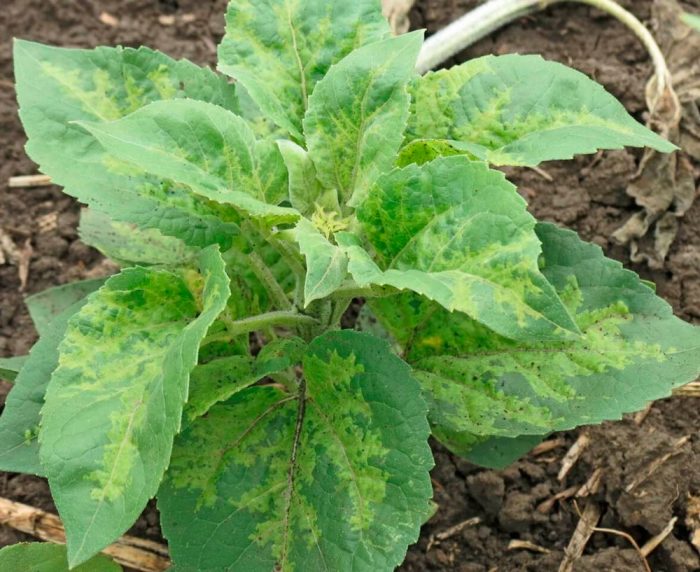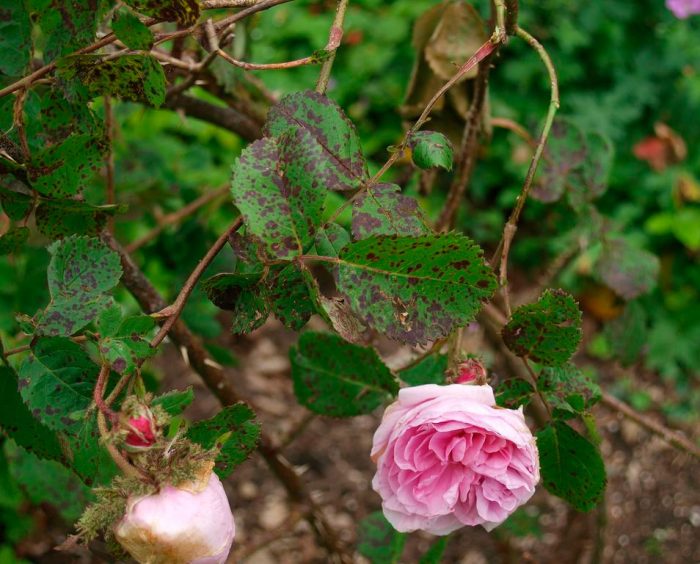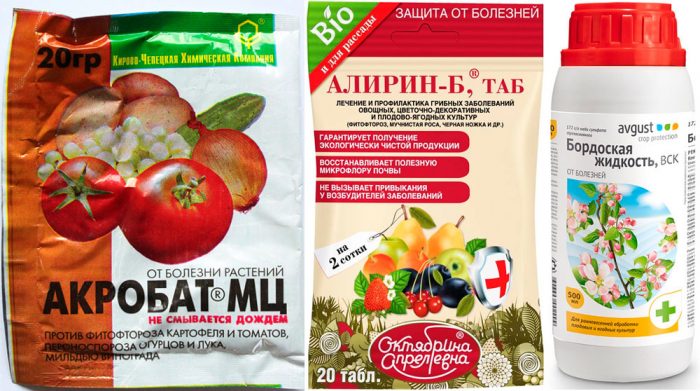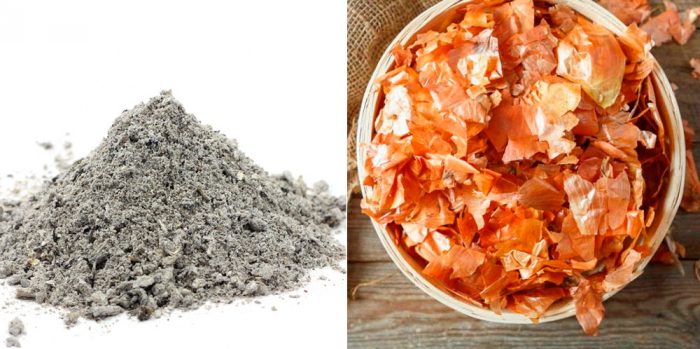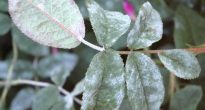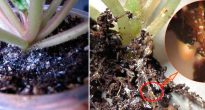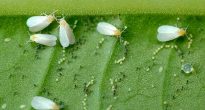Downy mildew, or downy mildew, is one of the most common diseases that affects various plants. This disease is fungal and is caused by the inferior fungus Peronospora. The causative agent of this disease persists both in seed material and in plant debris, and its activation is observed with a strong increase in air humidity, for example, during a period of prolonged rains or in damp weather.
Content
Features of the disease
In plants affected by downy mildew, oily, round or angular specks of greenish-yellow color are formed on the front surface of the leaf plates, which are limited by veins. Later, on the seamy surface of the foliage, a barely discernible bloom of a purple-gray hue appears. Over time, the spots get larger and connect with each other. As a result, the affected foliage becomes wrinkled, droops and dries up, after which it crumbles into fragments that can transfer pathogens to plants located in the neighborhood. Due to the fact that the foliage of a sick bush begins to actively die off, the fruits are tied and develop more slowly than usual, while they become faded and lose their taste.
If a plant is strongly affected by peronosporosis, then because of this it can die very quickly. All cultivated plants are affected by this disease: both vegetables, fruit shrubs and trees, and indoor, as well as garden flowers. During one growing season, the disease is able to form up to 20 generations and spray more than one million zoospores. Various pests, for example: aphids, whiteflies, etc., "help" the peronospora to spread.
Downy mildew control measures
To cure a plant affected by downy mildew, use a sulfur solution (for 1 bucket of water from 50 to 80 grams). It is used to spray the plant itself, as well as the surface of the soil around it. To combat peronosporosis, the following fungicidal agents are also used drugs: Gamair, Alirin-B, Fitosporin-M, Planriz or Glyokladin. The garden or garden plot is sprayed with a solution of these funds with a break of 15 days.When about four weeks remain before harvesting, all spraying with fungicidal preparations will need to be stopped, and if necessary, the treatment continues with less toxic and safer folk remedies.
Please note that it will not be possible to get rid of this disease only by treating plants with fungicides. You will also need to strictly adhere to the agrotechnical rules of various crops, and also do not forget about measures to prevent the disease.
Preventive measures
In order to prevent the appearance of plants affected by peronosporosis on your site, it is imperative to take preventive measures. For example, in the autumn, when the entire crop is harvested, the site is cleared of plant residues, and the soil is dug to a depth of 25 to 30 centimeters.
If last season on your site there were plants affected by peronosporosis, then in early spring it is recommended to treat the soil on the site with a solution of copper sulfate (2-3%) or manganese potassium (1%). After processing, a mandatory digging of the soil is carried out. For soil disinfection, you can also use the following biological agents: Gamair, Fitosporin-M or Alirin-B.
In order to prevent downy mildew at the beginning of the spring, before the buds bloom, the plants are treated with a solution of urea (7%), ammonium sulfate (15%) or ammonium nitrate (10%). Further, the trees are treated with a solution of Bordeaux mixture (1%): the first time - in the green cone phase, the second - at the end of flowering, and the third - during the formation of ovaries. Even after the plant has faded, it can be treated with such biological products as: Gaupsin, Gamair, Planriz, Integral or Mikosan. Also, the biological product Planriz is used for processing, unlike other means, they can process plants even when there is only 1 day left before harvesting.
In order to reduce the risk of damage to crops by peronosporosis, they are not grown annually in the same area. For example, if cucumbers grow on a certain area this season, then it will be possible to grow the same crop on it again only after 3-5 years (no less). Otherwise, pathogens will accumulate in the soil, due to which the bushes will grow weak and painful.
The seed is necessarily subjected to pre-sowing preparation, for this it is kept in a solution of potassium manganese (1%) or poured into a thermos filled with warm (from 45 to 50 degrees) water for 15 minutes. Before planting seedlings in a greenhouse or in open ground, their root system is immersed in Trichodermin solution for 2-3 hours, which must be done according to the instructions (see the package).
For cultivation, it is recommended to choose those types and varieties of crops that are resistant to fungal diseases. Planting should not be too dense, and the crowns of shrubs and trees should be systematically thinned out, because fungi grow and develop best in crowded conditions. Be sure to adhere to the agrotechnical rules of crops and provide the plants with proper and timely care. Those plants that are very strongly affected by peronosporosis are dug up and destroyed by fire.
Downy mildew on vegetables
Peronosporosis of cucumbers
Downy mildew develops on cucumbers most often in August, since it is at this time that the air temperature decreases at night, as a result of which condensation appears on their foliage, which is considered an excellent breeding ground for fungal spores. On cucumbers, peronosporosis can develop due to the fact that there is too much nitrogen in the soil, or when the plants do not have enough phosphorus or potassium. Most often, peronosporosis develops on cucumber bushes growing in a greenhouse, since there are favorable conditions for the appearance of dew.
When the first symptoms of downy mildew are detected, the bushes growing in the greenhouse are sprayed with a solution of a fungicidal drug, for example, Gold, copper oxychloride, Ridomil or Efal.Those bushes that grow in open ground are recommended to be treated with such means as Quadris, Strobi or Acrobat MC. But remember that you need to process cucumbers in a timely manner, if you are even 2 days late, then you will not be able to save the plants. That is why special attention should be paid to preventive measures. If you do not forget about preventive measures, then cucumbers will be reliably protected from both downy mildew and most fungal diseases.
Preventive measures:
- For cultivation, you need to choose those varieties that are resistant to peronosporosis, for example: Katyusha, Kumir, Photon, Zodiac, Rodnichok, Debut or Blu.
- Seed material must undergo pre-sowing treatment, for this it is immersed in warm (about 50 degrees) water for a quarter of an hour.
- Immediately before planting, the soil must be treated, for this they use Gamair or Fitosporin-M. Then they carry out a deep digging.
- In the greenhouse, you need to carefully monitor the level of humidity. Immediately after spotting leaf plates with spots, they should be cut off together with the petioles.
- To make plants less susceptible to pathogenic microorganisms, they are fed with phosphorus and potassium. Remember that the soil should not contain too much nitrogen.
- Spray the bushes on a green leaf with a solution of Planriz biological product, which is made on the basis of herbal extract.
Peronosporosis onion
As soon as the first symptoms of the disease are found on the onion, they immediately stop feeding it with organic matter and fertilizers containing nitrogen. In this case, the onions need to continue to be fed with potassium and phosphorus. Suspend watering the garden for a while to help lower the moisture level.
To cure an onion affected by peronosporosis, it should be treated with a solution of Bordeaux mixture (1%), a suspension of Polycarbacin or Arbamide. In order to prepare a suspension, combine 30 to 40 grams of Polycarbacin or Arbamide and a bucket of water. Re-processing is carried out after 7-15 days. When 20 days remain before harvesting, the treatment with the Bordeaux mixture is stopped. Remember that if onions are treated with pesticides, then their greens are not used for food.


Watch this video on YouTube
Downy mildew on sunflower
If a sunflower is struck by downy mildew, then it has a lag in growth, its stems do not thicken, and the root system does not develop. Chlorotic specks form on the front surface of the leaf plates, and on the seamy surface - a whitish bloom. Only a small part of the affected bushes reach the flowering phase, while inflorescences are formed on them small with non-developing small seeds. Experts count 6 forms of sunflower infection with peronosporosis. To cure the affected bushes, they are sprayed with such agents as: Ridomil Gold, Amistar Extra, Pictor, Abakus and other similar actions.
In order to prevent the defeat of sunflower by peronospora, it is imperative to adhere to the rules of crop rotation and agricultural practices.
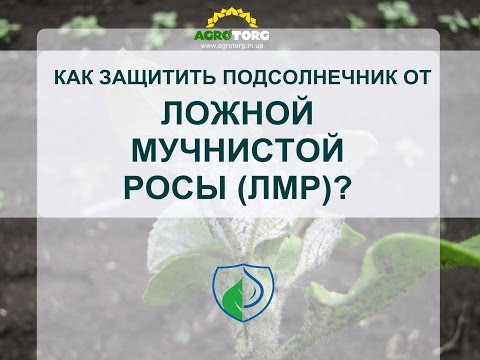

Watch this video on YouTube
Downy mildew on shrubs
Grapes are also affected by peronosporosis, but in this case it is called mildew. For European grape varieties, this disease is very dangerous. Mildew was introduced to southern France in 1878 from North America. If the affected grapes are left untreated, the damage to the vineyard can be significant.
The disease affects the upper parts of the stems, foliage, antennae, inflorescences, young fruits and ridges. To preserve the grapes, it will be necessary to carry out preventive treatment of the bushes in a timely manner, for this they use such means as: Cabrio TOP, Poliram, Acrobat TOP or Delan.The bushes are treated before flowering, and then in case of rains, abundant and frequent dews, and at high humidity, spraying is carried out 1 time in 7 days. If the weather is dry, then the treatments are carried out 1 time in 15-20 days. Throughout the season, grapes are sprayed 2-8 times for prevention.
Peronosporosis on garden flowers
Downy mildew on roses
Unlike powdery mildew, which in roses is the first to affect leaf plates located very close to the soil surface, downy mildew first affects the upper part of the plant. Roses get sick at a time when their buds are similar in size to a pea. The disease develops very quickly, for example, even in the evening the bushes were absolutely healthy, and in the morning the foliage flies from them, while the flowering wave is disturbed. In the affected plant, brown specks form on the foliage, and then a yellow border appears around them. The foliage from the rose flies around almost immediately after the spots appear. However, this disease cannot destroy the rose.
If the bushes are grown in a greenhouse, then try to lower the humidity level, for this, do not forget to turn on the heating every night. If bushes located in the open field are affected by peronosporosis, then it will not be possible to reduce the level of humidity, in this case the bushes can be sprayed with the following means: Ordan, Thanos, Ridomil, Previkur, Acrobat, Consento or Revus.
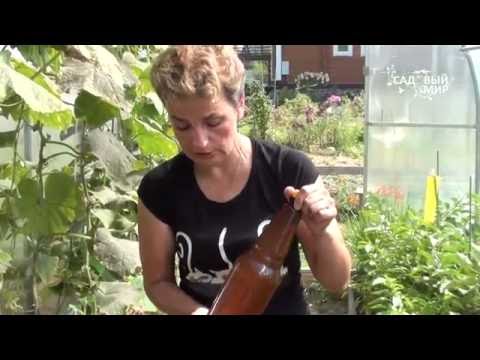

Watch this video on YouTube
Downy mildew on indoor plants
Houseplants are also susceptible to peronosporosis. On the front surface of the foliage, irregularly shaped specks of yellow color are formed, over time they become darker and become necrotic. A gray bloom appears on the seamy surface of the sheet plates, which eventually turns black. Yellowing and death of foliage is also observed. The disease develops very actively in a heavy and acidic soil mixture, and the plant suffers especially strongly in cramped conditions and with insufficient ventilation on the shelves or window sills.
They fight downy mildew on indoor plants in the same ways as on garden crops, for example:
- Mandatory pre-sowing seed preparation. To do this, they are immersed in very warm (about 50 degrees) water for a quarter of an hour.
- Cut off all diseased leaf plates from the bush.
- The flower needs to be sprayed with a pesticide 5 times with a break of 7 days, for this they use a solution of Bordeaux mixture (1%), Kuproksat, Bravo, Oxychom, Ordan or Kvdris.
Remedies for downy mildew (preparations)
For peronosporosis, both folk remedies and chemical preparations, or rather fungicides, are used. The following pesticides are most popular among gardeners and truck farmers:
- Acrobat MC... It is a drug of contact and systemic-local action, which is very toxic to humans.
- Alirin-B... Such a biological agent suppresses fungal diseases both in soil and on plants. Its action is very similar to Fitosporin-M.
- Bordeaux liquid... A broad-spectrum contact drug, very toxic to humans.
- Gamair... It is a biological bactericide that is used to fight bacterial and fungal diseases both on crops and in the ground.
- Glyocladin... This biological preparation actively fights against pathogens of fungal diseases. It is analogous to Trichodermin.
- Oxyhom... Systemic contact drug with a wide spectrum of action, highly toxic to humans.
- Polycarbacin... It is a systemic drug of therapeutic and prophylactic action. It is used for processing vegetable and fruit crops.
- Bravo... Contact protective agent. The duration of its action is from 1.5 to 2 weeks.
- Previkur... The systemic drug has a wide spectrum of action and is used in the fight against downy mildew and root rot.
- Ordan... Such a contact-systemic drug for humans is moderately dangerous.
- Ridomil Gold... Contact-systemic means.Very toxic to humans.
- Trichodermin... This biological agent is used for the protection and treatment of root diseases. They treat both indoor and ornamental plants with it.
- Fitosporin-M... Contact microbiological preparation, which is used to protect crops from various fungal diseases.
- Quadris... Systemic drug of protective and therapeutic action. It has one unusual property - it prolongs the fruiting of plants by 15–20 days.
- Revus TOP... This remedy is used both for the treatment and prevention of fungal diseases.
Folk remedies
After the ripening of fruits on trees, as well as vegetables and berries, begins, all spraying of crops with pesticides that are dangerous to human health is stopped. However, the processing of crops must be continued, but for this they are already using folk remedies that are also capable of fighting downy mildew.
There are several very effective folk remedies that are used by many gardeners and gardeners in the fight against peronosporosis:
- Mix a liter of skim milk and 9 liters of water. Pour 10 drops of iodine (5%) into the resulting mixture. This solution is used to treat any culture.
- Pour a couple of glasses of wood ash into a container and fill them with 2-3 liters of freshly boiled water. The cooled mixture, filtered through a napkin folded 3-4 times, is poured into 10 liters of water.
- A solution of manganese potassium fights very well against downy mildew; for its preparation, combine a bucket of water with 1-2 g of the substance.
- When the disease is at the initial stage of development, then you can try to cope with it with an infusion made from onion husks. Combine 10 liters of water with 0.2–0.3 kg of onion husks, put the mixture on fire and let it boil. Remove it from the stove and leave for 2 days to infuse. The strained broth is used to treat plants.
- A useful microflora develops in manure, which is able to destroy pathogens, which is why it is often used to prepare a remedy for downy mildew. Combine water with mullein in a 3: 1 ratio. The infusion will be ready after 3 or 4 days. The strained agent is diluted with such an amount of water that the final solution volume is 7–8 liters. The composition is sprayed on the foliage of crops in the evening or on a cloudy day.
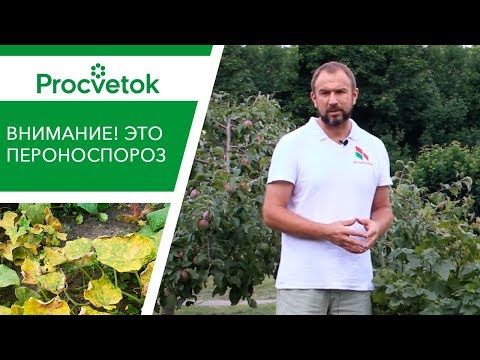

Watch this video on YouTube

